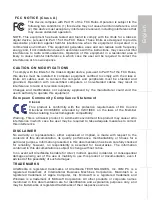
Configuration and Operation
99
Gain
A nominal video signal level is usually 1 volt peak-to-peak for composite video, 0.7 volts for
component or RGB video, or 0.3 volts for the chrominance subsection, at which level a fully
saturated picture is transmitted to the acceptor. However, for cases where the video signal is
attenuated, a low-noise, high-gain analog amplifier is built into quality video processing equipment.
This amplifier provides video gain control whereby the video signal can be boosted or reduced. Dark
pictures resulting from low level lighting are easily adjusted.
The
Gain
drop-down menu enables controlling the video gain from
Off
or in steps from 1 to 9.
7.5.2
White Balance
Shown below is the drop-down menu for controlling the camera’s white balance (color balance).
Figure 91: Camera Settings Screen – White Balance
A camera needs to find a reference color temperature as a way of measuring the quality of a light
source for calculating all other colors. The unit for measuring this ratio is in Kelvin (°K) degrees. You
can select one of the White Balance control modes according to the operating environment. The
table below shows the color temperature of some light sources for reference.
Light Sources
Color Temperature in K
Cloudy Sky
6,000 to 8,000
Noon Sun and Clear Sky
6,500
Household Lighting
2,500 to 3,000
75-watt Bulb
2,820
Candle Flame
1,200 to 1,500
Three white balance modes are available:
Auto
– The Auto Balance White mode computes the white balance value output using color
information from the entire screen. It is suitable for an environment with a light source color
temperature in the range of approximately 2,700 ~ 7,500K.
ATW (Auto Tracking White Balance)
– The Auto Tracking White Balance function
automatically adjusts the white balance in a scene while temperature color is changing. The
ATW Mode is suitable for an environment with a light source color temperature in the range
of approximately 2500 ~ 10,000K.















































